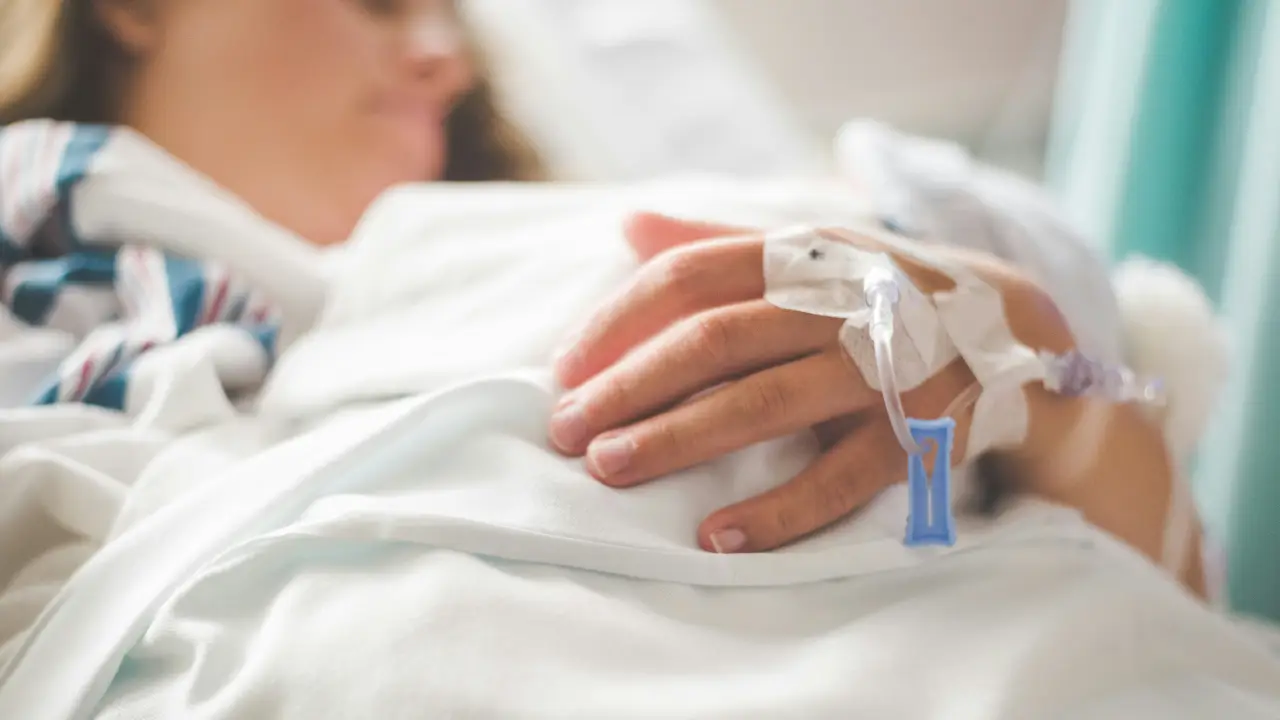High-waisted, full-coverage cotton underwear is best after a hysterectomy.They provide comfort without irritating the surgical site. Undergoing a hysterectomy is a significant surgical procedure that requires careful preparation, including choosing the right clothing for your hospital stay. Selecting comfortable and practical attire can greatly enhance your recovery experience.
In this comprehensive guide, we’ll explore what to wear in the hospital after a hysterectomy to ensure maximum comfort and ease during your healing process.
Understanding the Importance of Proper Clothing Post-Hysterectomy
Wearing the appropriate clothing after a hysterectomy is crucial for comfort and recovery. The right garments can accommodate medical equipment, facilitate movement, and minimize irritation to incisions.
Factors to Consider When Choosing Hospital Clothing
When selecting what to wear in the hospital after a hysterectomy, consider factors such as comfort, accessibility, and practicality.
Comfort is Crucial
Comfort is the most important factor when choosing hospital clothing after a hysterectomy.
Wearing loose-fitting and soft fabrics reduces pressure on incisions and swollen areas, promoting better healing and comfort.
Accessibility for Medical Staff
Choose clothing that allows easy access for medical examinations and procedures.
Garments with front openings or easy-to-move designs enable nurses and doctors to check your incisions without causing discomfort.
Accommodating Medical Devices
Your clothing should accommodate medical devices like catheters and IV lines.
Opt for attire that doesn’t interfere with any medical equipment you may have post-surgery, ensuring both safety and comfort.
Ease of Movement
Select clothing that allows you to move freely without restriction. Clothing should enable you to walk, sit, and perform gentle movements essential for recovery without hindrance.
Fabric Choices Matter
Soft, breathable fabrics like cotton are ideal for post-hysterectomy clothing. These materials reduce skin irritation and help regulate body temperature, keeping you comfortable throughout your stay.
Recommended Clothing Items for Hospital Stay
Choosing specific types of clothing can enhance your comfort and aid in your recovery process.
Loose-Fitting Gowns or Nightshirts
Loose-fitting gowns or nightshirts are highly recommended after a hysterectomy. They provide maximum comfort with minimal pressure on the abdomen and are easy to put on and take off.
Benefits
- No Waistband Pressure: Eliminates discomfort from elastic bands around the waist.
- Easy Access: Simplifies medical examinations and dressing changes.
- Comfortable Fit: Allows for swelling and bloating common after surgery.
Front-Open Pajamas or Tops
Front-open pajamas or tops are ideal for accessibility and comfort. They make it easier to dress without lifting your arms excessively and provide easy access for medical checks.
Benefits
- Minimal Movement Required: Reduces strain on surgical sites.
- Convenient for IV Lines: Avoids entanglement with medical equipment.
- Versatile Use: Can be worn during the day or night.
High-Waisted Loose Pants or Shorts
High-waisted, loose pants or shorts avoid irritating abdominal incisions. These garments sit above the surgical area, reducing friction and discomfort.
Benefits
- Comfortable Waistband: Prevents rubbing against incisions.
- Breathable Fit: Allows air circulation to aid healing.
- Adjustable Options: Drawstrings or elastic bands accommodate swelling.
Supportive Undergarments
Supportive but gentle undergarments can provide comfort post-surgery.
Consider high-waisted cotton underwear that doesn’t compress the abdomen.
Benefits
- Gentle Support: Offers slight support without tightness.
- Soft Materials: Reduces skin irritation.
- Full Coverage: Provides comfort and modesty.
Comfortable Footwear
Slip-on, non-slip footwear is essential for hospital mobility. Easy-to-wear shoes or slippers help prevent falls and provide stability.
Benefits
- Safety First: Reduces risk of slipping on hospital floors.
- Ease of Use: No bending required to put on or remove.
- Comfortable Fit: Keeps feet warm and supported.
Clothing Items to Avoid After Hysterectomy
Certain types of clothing can hinder your recovery and should be avoided.
Tight Clothing
Avoid tight clothing that puts pressure on your abdomen. Tight garments can irritate incisions and hinder blood circulation, impeding healing.
Items to Avoid
- Tight Jeans or Pants: Restrictive waistbands can cause discomfort.
- Form-Fitting Tops: May compress the surgical area.
- Underwire Bras: Can press against incisions if they extend to the chest area.
Complicated Fastenings
Steer clear of clothing with complicated buttons, zippers, or hooks. These can be difficult to manage post-surgery and may cause unnecessary strain.
Issues
- Difficult Dressing: Increases effort required to dress.
- Risk of Injury: Potentially irritates incisions during movement.
- Time-Consuming: Prolongs dressing and undressing processes.
Rough Fabrics
Do not wear clothing made from rough or irritating fabrics. Materials like wool or synthetic fibers may cause skin irritation or allergies.
Problems
- Skin Irritation: Can lead to rashes or discomfort.
- Allergic Reactions: Potentially exacerbates sensitive skin.
- Uncomfortable Feel: Reduces overall comfort during recovery.
Additional Items to Bring to the Hospital
Enhance your comfort by packing a few extra items alongside your clothing.
Robes or Wraps
Bring a soft robe or wrap for added warmth and modesty. They are useful for walking around the hospital or when you have visitors.
Benefits
- Easy Layering: Provides warmth without being cumbersome.
- Accessibility: Open-front design allows for medical access.
- Versatility: Can be used over nightwear or casual clothing.
Slip-on Shoes or Slippers
Pack slip-on shoes or slippers with non-slip soles. They make it easy to move around safely without bending over.
Benefits
- Convenience: Easy to wear without assistance.
- Safety: Non-slip soles prevent falls.
- Comfort: Cushioned soles support your feet.
Socks
Include warm socks to keep your feet cozy. Hospitals can be cold, and socks help maintain body warmth.
Benefits
- Temperature Regulation: Keeps feet warm in cool environments.
- Comfort: Soft fabrics enhance comfort.
- Circulation: Loose-fitting socks prevent constriction.
Personal Hygiene Items
Bring your preferred personal hygiene items for comfort. Familiar products can make you feel more at ease during your stay.
Suggestions
- Toiletries: Toothbrush, toothpaste, mild soap.
- Skincare Products: Gentle moisturizers or lip balm.
- Hair Care: Brush or comb, hair ties.
Packing List for Hospital Stay
Having a checklist ensures you don’t forget any essentials.
Clothing Essentials
- 2-3 Loose-Fitting Gowns or Nightshirts
- Front-Open Pajamas or Tops
- High-Waisted Loose Pants or Shorts
- Supportive Undergarments
- Comfortable Slip-on Footwear
- Warm Socks
Additional Comfort Items
- Soft Robe or Wrap
- Personal Pillow
- Light Blanket
- Eye Mask and Earplugs
Personal Items
- Toiletries Kit
- Mobile Phone and Charger
- Books or Magazines
- Notepad and Pen
Tips for Maximizing Comfort During Hospital Stay
Implementing a few strategies can significantly improve your recovery experience.
Manage Pain and Discomfort
Follow your doctor’s pain management plan diligently. Staying ahead of pain can help you move more comfortably and heal faster.
Strategies
- Medication Schedule: Take pain relievers as prescribed.
- Relaxation Techniques: Practice deep breathing or meditation.
- Ask for Help: Don’t hesitate to request assistance from nurses.
Personalize Your Space
Personalizing your hospital space can boost your mood. Adding personal touches makes the environment feel more welcoming.
Ideas
- Photos of Loved Ones: Place them where you can see.
- Aromatherapy (If Allowed): Use calming scents like lavender.
- Comfort Items: Bring a favorite blanket or stuffed animal.
Stay Mobile as Advised
Engage in gentle movement as recommended by your healthcare provider. Light activity can promote circulation and prevent complications.
Activities
- Short Walks: Walk around your room or hallway.
- Leg Exercises: Simple movements while in bed.
- Breathing Exercises: Helps with relaxation and lung function.
FAQs On What to Wear in Hospital After Hysterectomy
Pack at least two to three comfortable outfits for your hospital stay.
This ensures you have clean clothing if one set becomes soiled.
No, you will need to wear a hospital gown during surgery.
Hospital gowns are designed to maintain a sterile environment and allow access for medical equipment.
Yes, bring a soft, non-underwire bra if it adds to your comfort.
Choose a bra that is easy to put on and doesn’t press against any incisions.
Compression garments may be recommended by your doctor.
They can aid in reducing swelling and supporting muscles but should only be used if advised.
High-waisted, full-coverage cotton underwear is best after a hysterectomy.
They provide comfort without irritating the surgical site.




